Scottish Art News
Latest news
Magazine
News & Press
Publications
Glaswegians Exhibition Brings Glasgow’s Hidden Photography Archive Back to Light
By Neil Cooper, 15.09.2025
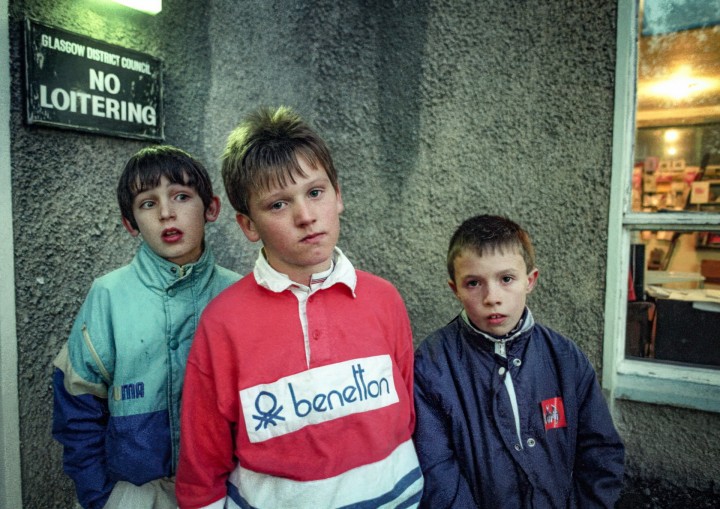
When twenty-two people were commissioned by a community arts project in the North-East of Glasgow to take photographic portraits of their fellow Glaswegians, the 30,000 images taken between 1989 and 1993 documented a city and its citizens at work, rest and play. Three decades on, these images have become a vital grassroots archive of a city in flux. They also document a world that existed beyond some of the glossier initiatives that spearheaded Glasgow’s tenure as 1990 European City of Culture.
Glaswegians was the brainchild of Alistair McCallum, then artist in residence with Cranhill Arts Project, the community initiative founded in 1981. Around the same time, McCallum and artist collaborator Jane Carroll found themselves designing and producing banners and posters for some of the numerous political events that were galvanising assorted protest movements across Scotland. While many of the photographs are in black and white, the posters and banners are rich in colour and emblazoned with bold typeface and images.
After more than thirty years out of view, the banners, posters and photographs have been unearthed for the first public display of the work since the early 1990s in Glaswegians - Cranhill Arts, Alistair McCallum and Jane Carroll, currently running at Street Level Photoworks in Glasgow. While the photographs immortalise real lives, the posters and banners are a glimpse into Glasgow’s recent past at the vanguard of the anti-poll tax movement, the anti-apartheid movement and other everyday causes that put art on the frontline. Together, they celebrate a real life cultural revolution that took place on the gallery’s doorstep.
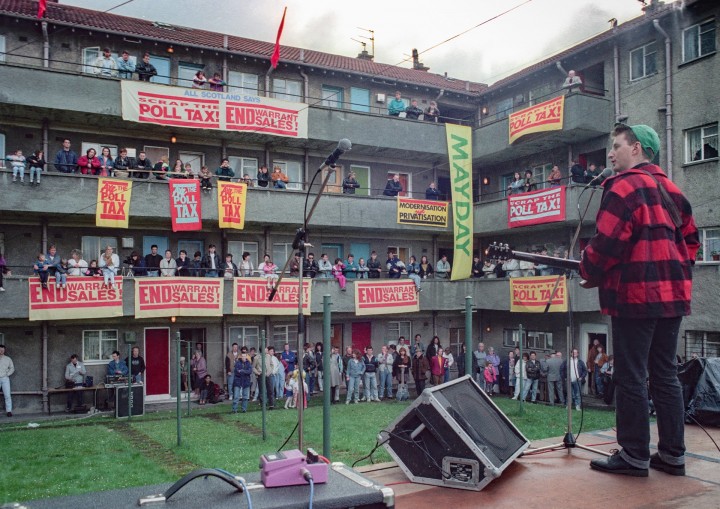 Billy Bragg In Cranhill, May Day, 1989. Photograph Charlie Crawford.
Billy Bragg In Cranhill, May Day, 1989. Photograph Charlie Crawford.
“It was all done for solidarity,” says McCallum today. “We were very young artists trying to do something social with ourselves. I got a job as an artist-in-residence with Cranhill Arts when I was twenty-two. You wouldn’t get a job like that now if you were twenty-two, but when I got it, my line was that it was all about the means of production, and that people should have access to those means of production and do things themselves.”
“I think the Council thought they were going to get murals or some kind of public art,” McCallum continues, “but from a conceptual point of view, my response was that everyone should be doing it. It was about people from a working-class community turning the cameras around and photographing out the way, as opposed to being, not victims, but the subject of somebody else's social documentary photographs. So, we reversed all those norms, and we also did it as a group. It took me a while to build up the resources, but the posters and the photographs developed in parallel.”
Working alongside community activists running credit unions and food co-ops, McCallum, Carroll and a small army of photographers and poster makers gave a visual identity to grassroots protest by way of a thriving cottage industry.
“People started coming to us, and it became about good design for good causes,” McCallum remembers.
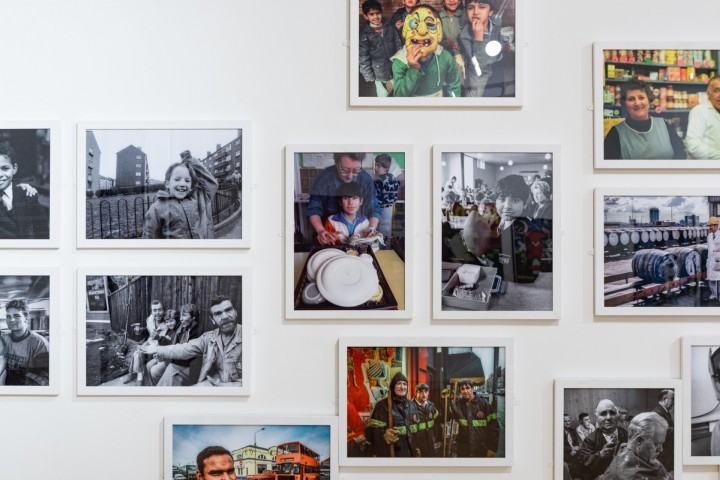 Courtesy of Street Level Photoworks.
Courtesy of Street Level Photoworks.
Glaswegians remains the biggest photography project Scotland has ever seen, and one of the biggest in the world. Initially shown across the city in pubs, shops, supermarkets, libraries and other ad hoc spaces, the British Council helped foster exhibitions in twenty-six countries. On home turf, the presciently named Future Memories show drawn from the Glaswegians project was one of the earliest exhibitions hosted at Glasgow’s then recently opened Tramway venue at the end of 1991 and into 1992.
“I've never seen it all together,” McCallum reflects a few days after the exhibition opening. “Because lots of it was poster work, you would see them fly posted or up in pubs, and they would be gone within a few months. So it's quite strange, and quite good, to see the two parts, the posters and the photographs, next to each other.”
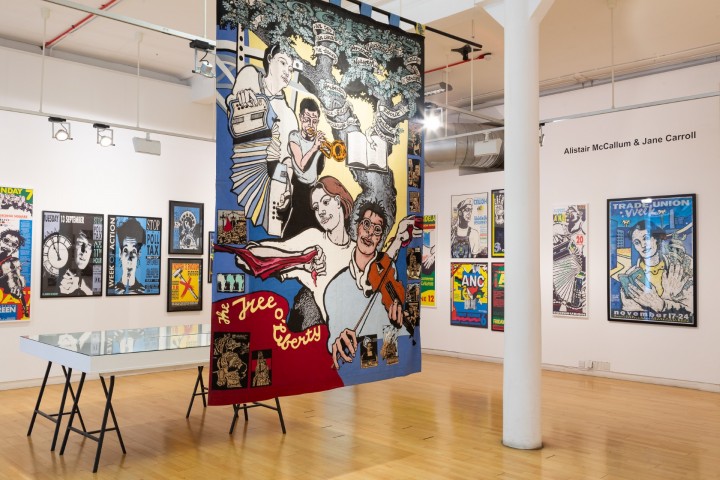 Banners and posters by Alistair McCallum and Jane Carroll. Image courtesy of Street Level Photoworks.
Banners and posters by Alistair McCallum and Jane Carroll. Image courtesy of Street Level Photoworks.
Running alongside Glaswegians is The Scene From Within, an exhibition of work by Gerry D’Ambrosio, Mandy Edwards, Keith Ingham and Malcolm R Hill. In 1976, these four photographers from Partick Camera Club were invited by Elspeth King, then Keeper of Social History at the People’s Palace Museum in Glasgow, to do a survey of The Calton area in inner-East Glasgow.
Seen in tandem, the two exhibitions fuse art, documentary photography and social history in a way that is becoming increasingly significant in today’s fast moving digital environment where such physical archives can end up neglected or lost. Vital to both exhibitions is a sense of a collective will that stemmed from the ground up.
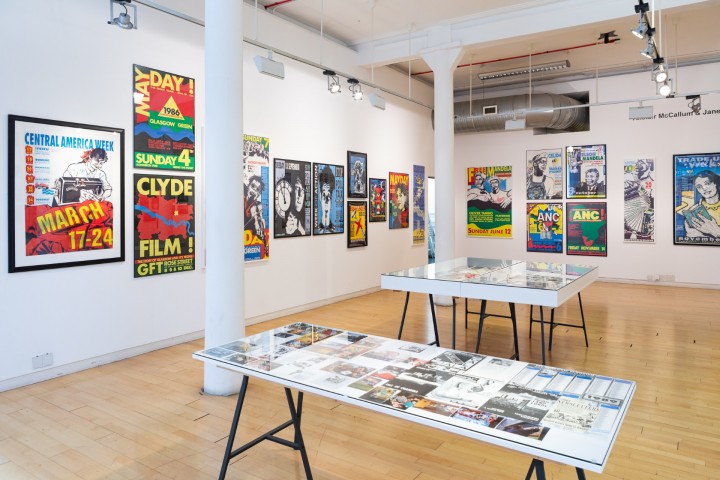 Banners and posters by Alistair McCallum and Jane Carroll. Image courtesy of Street Level Photoworks.
Banners and posters by Alistair McCallum and Jane Carroll. Image courtesy of Street Level Photoworks.
While Cranhill Arts Project remains a vital resource, the Glaswegians photographs fell out of view. In 2005, part of the archive was published online on the Cranhill website, and at time of writing is in the process of being modernised with help from the Heritage Lottery Fund. Both this and Street Level’s current exhibition are going some way to putting Glaswegians back into the public domain in a way that continues to inspire its audience.
“It's funny,” says McCallum. “One of our neighbours came along to the opening of the exhibition, and she bumped into Jane the next day, and was saying how we used to do things, and get engaged with things. She said how we were on those poll tax demos, and how we were on all those anti-apartheid marches, but what do we do now? We ‘like’ something on Instagram. She was saying how seeing the exhibition was giving her an impetus to do more than that.”
“So maybe people will have a look at the exhibition and think the same. They’ll certainly have a look at what it is to be a Glaswegian through the photographs, because there are a lot of proud people in them. They knew we were taking the photographs and the reason we were taking them, so they were complicit. They're not like fly on the wall documentaries. They're more like family photos. People knew they were part of something. ‘Oh yeah, I'm me. I can participate in this’. You can see that from the photographs.”
“Seeing them on a gallery wall again is brilliant. Seeing them together, this huge crowd of Glaswegians of all different types, staring back at you with a bit of pride and confidence, that’s pretty good as well. People will like that. It's a good legacy. Then if everybody says they need to do more than liking something on Instagram, maybe we can go back to using some good design for good causes to change the world.”
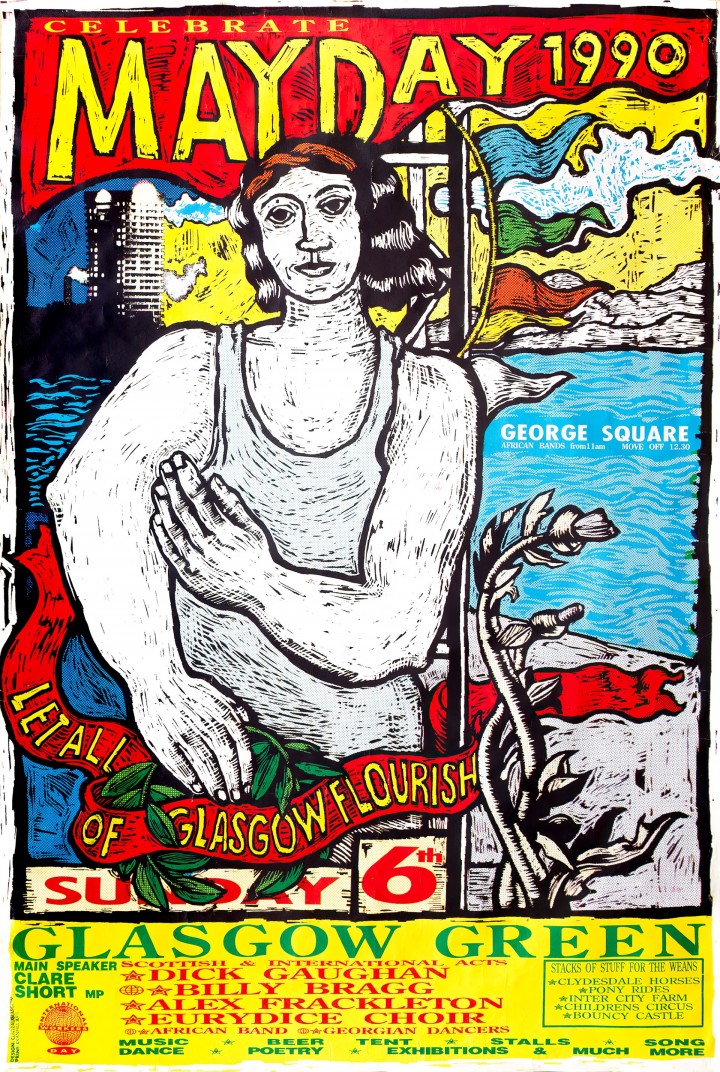 May Day 1990 poster. © Central Designs.
May Day 1990 poster. © Central Designs.
Glaswegians - Cranhill Arts, Alistair McCallum and Jane Carroll runs alongside The Scene From Within at Street Level Photoworks, Glasgow until 5 October. www.streetlevelphotoworks.org
The Glaswegians digital archive can be seen online at www.cranhillarts.com




